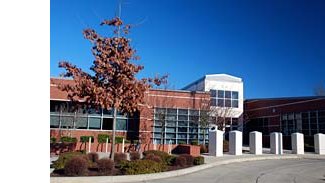-Whole Community Answers to Pacific NW Wildfire Threats-
Wildfire experts and weather specialists have predicted a low-risk, late-starting wildfire season for the Pacific Northwest this summer, but emergency managers caution against complacency. As tall grasses and foliage dry out—the likelihood of brush, range and timber fires increases, and according to FEMA Regional Administrator Ken Murphy, even a mild wildfire season—and there are never any guarantees—begs the question: What if it’s your woods that are burning?
“An informed, responsible and committed public can play a major role in safeguarding property and saving lives. Our firefighters are well-trained, well-resourced and totally dedicated—but they can’t do it alone,” said Murphy. “Planning for disasters means that we must plan for the Whole Community, including people of different ages and those with various access and functional needs.”
Murphy encourages all homeowners to exercise extreme caution with grills, campfires, trash fires and other heat sources, and to embrace the commonsense commitment to pre-disaster wildfire preparedness accepted in more traditionally recognized wildfire-prone areas. “Talk with your local fire department or forestry office,” said Murphy. “Stay abreast of local burn bans and changing weather conditions. Talk with your neighbors. After all, a community is only as safe as its least prepared member.”
Common sense wildfire preparedness measures include creating a Safety Zone or Defensible Perimeter:
• Establish firebreaks around the perimeter of structures, power poles and property.
• Cut back flammable weeds and brush, and remove branches within 15 feet of the ground.
• Mow regularly and rake leaves, limbs and twigs.
• Landscape with fire resistant plants.
• Keep roofs, chimneys and gutters clean.
• Install smoke detectors on every floor, and near sleeping areas.
• Stack firewood away from your home. Store combustible materials only in approved containers.
• Keep fire tools (shovel, rake, water bucket and ladders) handy.
• Clear overgrowth from house numbers and street signs
• Clear driveways and access roads so fire vehicles have room to maneuver.
• Plan and rehearse family evacuation plans.
• Don’t overlook adequate insurance coverage. Sit down with your insurance agent and make sure that coverage is still adequate and up to date for the hazards you face.
It is also smart to keep important personal documents quickly available should you need to evacuate. Consider collecting your driver’s license, passport and other identification, birth and marriage certificates, Social Security card, insurance policies, tax records, wills, deed or lease and stocks and bonds. Also know where your main turn-off switches and valves are for electricity, water and gas.
Evacuation kit contents should include:
• Flashlights.
• Battery-powered radio and extra batteries.
• First Aid Kit.
• Medicines, prescriptions and eyeglasses.
• Water.
• Change of clothes.
• Sleeping bags and pillows.
FEMA’s Resolve to be Ready in 2011 campaign promotes Whole Community involvement in disaster preparedness. For more information on protecting your family and your home from wildfires, go to: www.usfa.fema.gov, www.firewise.org, or www.fema.gov. For more information on the Ready Campaign and Citizen Corps, visit www.fema.gov, Ready.gov and CitizenCorps.gov.
Follow FEMA online at www.twitter.com/fema, www.facebook.com/fema, and www.youtube.com/fema. Follow Administrator Craig Fugate's activities at www.twitter.com/craigatfema. Social media links are provided for reference only. FEMA does not endorse non-government websites, companies or applications.
FEMA's mission is to support our citizens and first responders to ensure that as a nation we work together to build, sustain, and improve our capability to prepare for, protect against, respond to, recover from, and mitigate all hazards.
Monday, July 11, 2011
Subscribe to:
Post Comments (Atom)







No comments:
Post a Comment